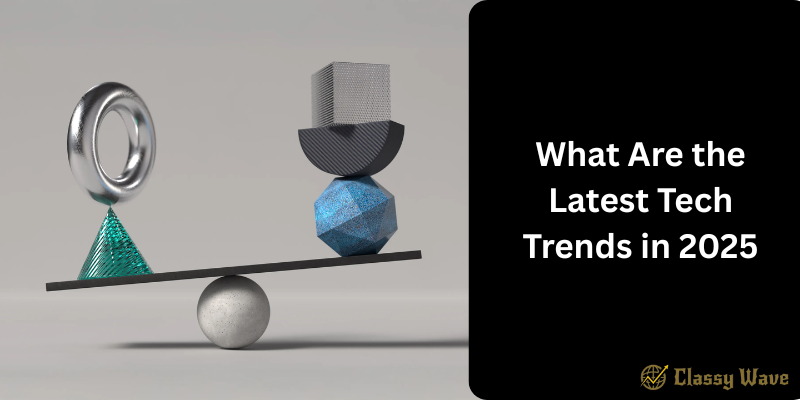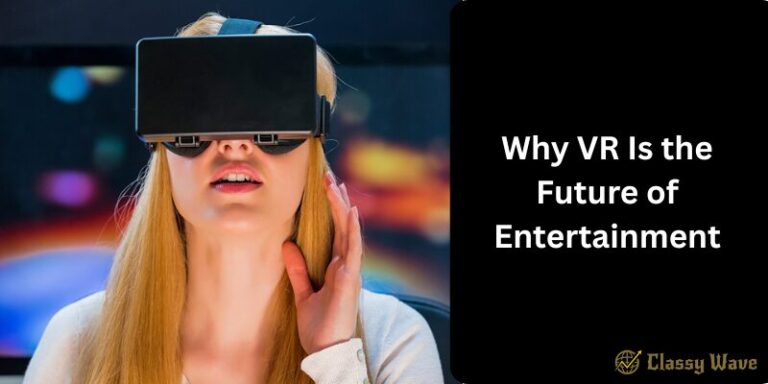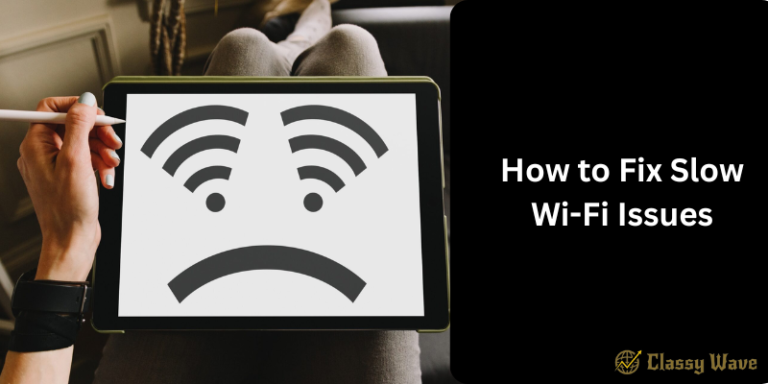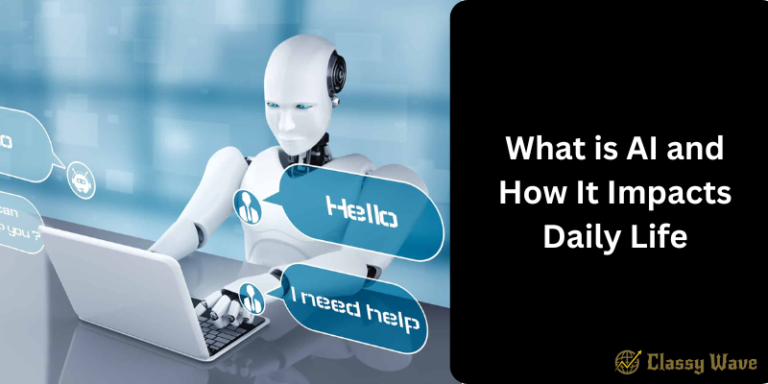What Are the Latest Tech Trends in 2025 | classy wave
Technology never stands still — and 2025 is shaping up to be one of the most revolutionary years yet. From artificial intelligence becoming a daily assistant to quantum computing stepping into the mainstream, the pace of innovation is faster than ever. Whether you’re a tech enthusiast, entrepreneur, or everyday user, understanding these trends can help you stay ahead of the curve.
Let’s dive into the latest tech trends in 2025 that are transforming industries, redefining how we live, and shaping the future of innovation.
1. Artificial Intelligence (AI) Everywhere
AI has gone beyond smart assistants — it’s now embedded into everything from healthcare to education to daily productivity tools. In 2025, Generative AI continues to dominate, powering creative writing, code generation, and personalized marketing.
Businesses are using AI to automate workflows, predict customer behavior, and enhance decision-making. Meanwhile, AI companions and voice-enabled bots are becoming more human-like, providing emotional support and personal guidance.
2. Quantum Computing Gains Real Momentum
Once a futuristic concept, quantum computing is becoming commercially viable in 2025. Tech giants like Google, IBM, and Intel have unveiled new processors capable of solving problems far beyond traditional computers.
Industries like pharmaceuticals, logistics, and cybersecurity are already experimenting with quantum algorithms to accelerate research and data analysis. This breakthrough marks the beginning of a new computing era where speed and accuracy reach unimaginable levels.
3. The Rise of Sustainable Tech
Sustainability is no longer optional — it’s essential. Green technology innovations are at the heart of 2025’s progress. Expect to see:
- Solar and wind-powered data centers
- Biodegradable electronics
- Energy-efficient AI models
Tech companies are embracing eco-friendly designs and circular production models to reduce electronic waste and carbon emissions. “Green AI” is emerging — systems designed to use less computing power while achieving smarter outcomes.
4. Extended Reality (XR) Takes Off
Extended Reality — a combination of Virtual Reality (VR), Augmented Reality (AR), and Mixed Reality (MR) — is changing how we interact with digital content.
In 2025, AR glasses are replacing smartphones in certain tasks, allowing users to browse, chat, and navigate with a simple glance. The metaverse is also maturing, focusing less on hype and more on real-world utility like remote collaboration, immersive learning, and digital retail experiences.
5. 6G and Ultra-Fast Connectivity
Just when 5G became mainstream, 6G has started making headlines. Expected to deliver speeds 100 times faster than 5G, 6G promises instant cloud access, zero-latency streaming, and massive IoT networks connecting billions of devices.
This leap in connectivity will unlock innovations like autonomous transportation systems, AI-driven smart cities, and real-time global communication at an unimaginable scale.
6. Robotics and Automation Redefined
Robots are becoming more human-like, both in appearance and intelligence. In 2025, service robots are managing logistics, assisting in surgeries, and even handling household chores.
Automation powered by AI and robotics is transforming manufacturing, agriculture, and construction, improving efficiency while reducing human error. The fusion of AI-driven robotics and edge computing means machines can make faster decisions independently.
7. Cybersecurity Powered by AI
With rising digitalization comes the challenge of data protection. 2025 has seen a boom in AI-powered cybersecurity systems capable of detecting threats before they occur.
Quantum encryption and blockchain-based security are becoming the new standards for protecting sensitive data. Organizations are investing heavily in proactive defense systems that can adapt to evolving cyber threats in real-time.
8. The Internet of Behavior (IoB)
Going beyond the Internet of Things (IoT), IoB analyzes human behavior patterns using connected devices, wearables, and smart sensors. This helps businesses and healthcare providers understand user habits more deeply.
For example, smartwatches can now monitor emotional states or stress levels and recommend personalized actions. While powerful, IoB also raises debates about privacy and data ethics.
9. Digital Health Revolution
Healthcare has become smarter, faster, and more connected in 2025. Wearable tech and remote monitoring allow doctors to track patients in real-time.
AI-driven diagnostics can now detect diseases early, while 3D bioprinting is making organ replacement research more promising. Telemedicine platforms are integrating AR tools, making virtual consultations as effective as in-person visits.
10. Edge and Cloud Fusion
The shift from centralized cloud systems to edge computing is accelerating. By processing data closer to its source, edge computing reduces latency, enhances privacy, and improves performance for real-time applications like autonomous cars and IoT devices.
In 2025, the fusion of edge + cloud infrastructure is enabling faster and smarter technology ecosystems.
11. Smart Homes Get Smarter
Smart homes are evolving into AI-driven ecosystems. Your home assistant now learns your habits — adjusting lighting, temperature, and even suggesting meal plans.
With better interoperability across devices, smart homes in 2025 focus on comfort, security, and energy efficiency, seamlessly integrating with wearables and mobile devices.
12. Biotechnology and AI Integration
The intersection of biotech and AI is producing mind-blowing results. In 2025, AI is helping scientists design new drugs, simulate biological systems, and even predict genetic disorders before symptoms appear.
We’re also seeing advancements in brain-computer interfaces (BCIs), allowing humans to control machines with thoughts — a massive leap in assistive technology and neuroscience.
13. Personalized Education with EdTech
The education sector continues to evolve with AI tutors, adaptive learning platforms, and virtual classrooms. In 2025, education is hyper-personalized — every student has a learning path tailored to their skills and pace.
Virtual reality field trips, holographic lessons, and AI-driven assessments are turning traditional education into an interactive, global experience.
14. Blockchain Beyond Cryptocurrency
Blockchain is no longer just about Bitcoin. In 2025, it’s being used for supply chain transparency, digital identity verification, and smart contracts. Governments and corporations are adopting blockchain for secure record-keeping and trustless systems.
This trend is enhancing data security, transparency, and efficiency across industries.
15. Ethical and Responsible AI
As AI becomes more powerful, so does the need for accountability. In 2025, governments and organizations are implementing strict guidelines to ensure AI ethics, transparency, and fairness.
AI models are being designed to avoid bias, protect user data, and operate responsibly — a crucial step toward building public trust in technology.
Conclusion
The tech landscape of 2025 is dynamic, interconnected, and deeply human-centered. From AI to quantum computing and sustainable innovation, these trends aren’t just shaping industries — they’re redefining our daily lives.
Whether you’re a business owner looking to innovate or a tech enthusiast eager to explore the future, keeping up with these 2025 technology trends will help you thrive in this new digital era.







